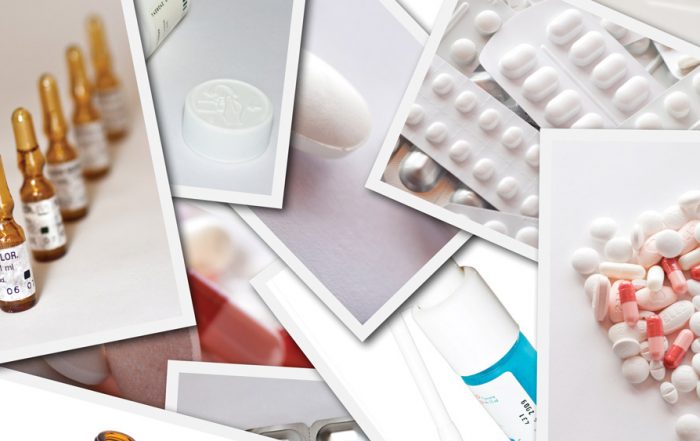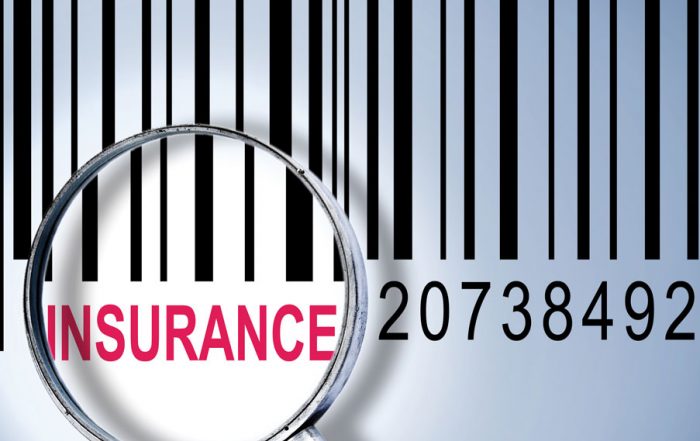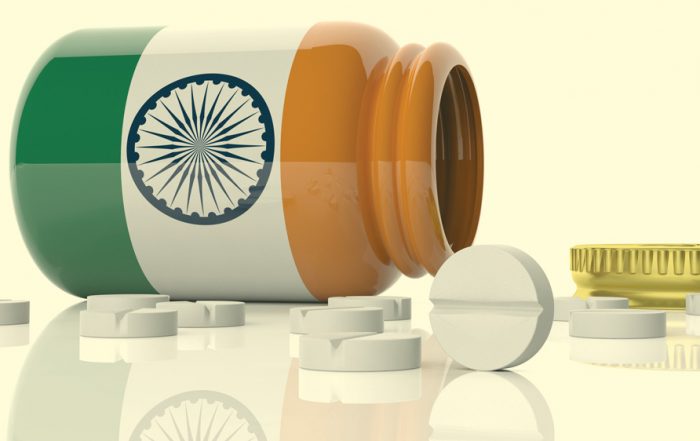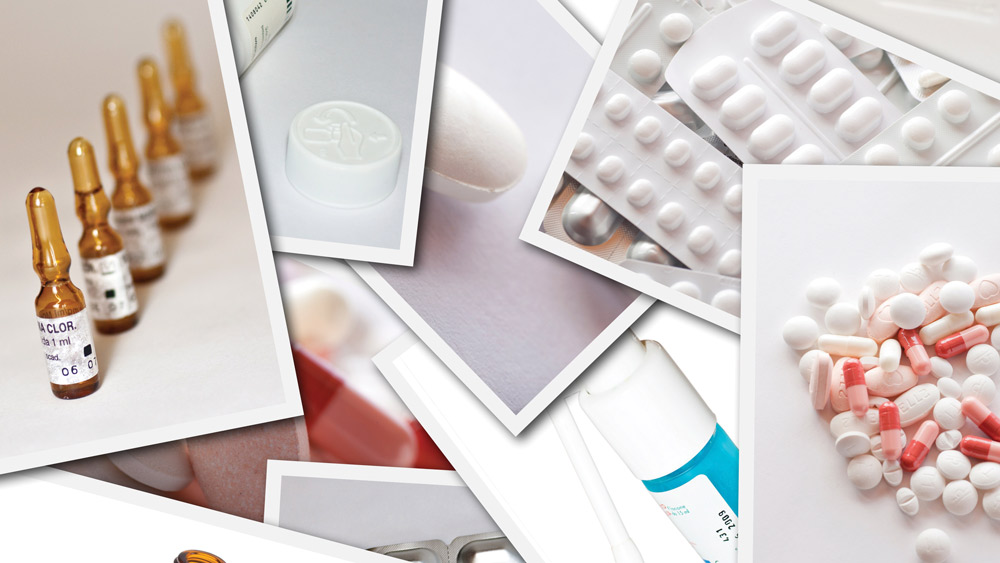
Compounding the Off-Label Promotion Debate: How FDA Could Regulate the Promotion of Unapproved Drugs
by Eli Tomar
As attention on the off-label promotion of prescription drugs intensifies, it is worth examining how this evolving regulatory landscape applies to the promotion of other prescription drugs that have not been deemed safe and effective by the Food and Drug Administration (FDA) for the use promoted: compounded drugs.1 Recent changes to federal law eliminated the prohibition on advertising these products. Because their uses are not evaluated by FDA for safety or effectiveness, exactly what can be said about them remains unclear. FDA’s position on the issue remains largely a mystery, and whether advocates and—more importantly—the judiciary would agree cannot be determined until the agency weighs in.
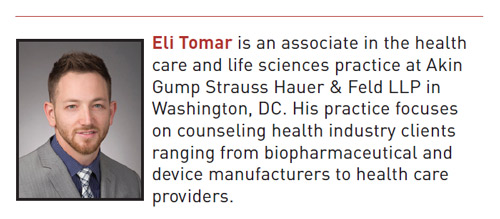
Off-Label Promotion, in 400 Words
No law explicitly prohibits drugmakers from promoting the use of their drugs for indications for which FDA has not approved their use (i.e., off-label). And FDA has made clear that it does not intend to regulate medical professionals’ prescribing practices. Still, the agency has continued to take a firm stance against the off-label promotion of prescription drugs, even in the face of growing sympathy from federal courts toward drugmakers’ free speech interests.
Although other statutes and regulatory bodies have shared authority for drug advertising, FDA interprets the Federal Food, Drug, and Cosmetic Act (FDCA) to empower the agency to regulate off-label promotion of prescription drugs in two ways. First, a drug is “misbranded” in violation of the Act if its advertising is false or misleading by misrepresenting its safety or effectiveness. In brief, information may only be communicated factually when there is “substantial evidence or substantial clinical experience” to support a claim.2 Recent FDA guidance indicates a slight relaxation of this long-articulated standard so long as the communication is supported by “scientifically appropriate and statistically sound” evidence.3 Second, FDA deems promotion that is inconsistent with approved labeling as evidence of a new intended indication of the drug. FDA interprets an advertisement to cause a drug to be misbranded if a drugmaker makes representations about the intended use of the product without providing “adequate directions for [that] use,” which includes certain risk information.4 Because FDA will not approve directions for an unapproved use, a drugmaker’s communications intending that its drug be prescribed for an unapproved use renders it misbranded. This functions as a complete bar on off-label promotion, and thus FDA has generally opted to pursue enforcement for the lack of adequate directions rather than litigate the accuracy of claims and their connection to the underlying scientific evidence. However, courts have taken an increasingly skeptical view of the agency’s legal theory.5
Because FDA treats off-label promotion as sufficient evidence of misbranding, there is limited concrete evidence of what exactly constitutes false or misleading promotion of a drug for an unapproved indication. FDA regulations caution that drug promotion is false or misleading if it presents the drug as safer or more effective than demonstrated in clinical trials, implies it is somehow better than a competitor’s drug without support, or provides an unbalanced presentation of risks and benefits, or is misleading in similar regards.6
Applying the Truthful and Nonmisleading Standard to Unapproved Drug Products
Many medicinal products within FDA’s jurisdiction are not reviewed prior to marketing, such as dietary supplements, over-the-counter (OTC) drugs, and low-risk medical devices, among others. However, a smaller universe of prescription drugs are marketed without premarket review for safety and effectiveness, including investigational new drugs (INDs) and products under the Drug Efficacy Study Implementation (DESI) program, as well as certain repackaged and compounded drugs.
Legally, all compounded drugs are “new drugs” subject to most requirements of the FDCA, but eligible for exemptions from several requirements—such as premarket approval—if certain conditions are met. Compounded drugs are defined in sections 503A and 503B of the FDCA, which detail the conditions that must be met by traditional pharmacies and outsourcing facilities, respectively, to utilize these exemptions.7 While traditional compounding under section 503A is performed by a pharmacist for an individually identified patient, compounding by outsourcing facilities under section 503B is not typically patient-specific and often entails larger-scale compounding of sterile drugs for use in health care settings.
Quintessentially depicted as a pharmacist mixing up ingredients for a patient with unique medical needs like an allergy to a drug’s inactive ingredient, in fact, sterile compounding performed by outsourcing facilities often entails preparing large batches of standardized product for anonymous patients thousands of miles away. These products can be prepared by manipulating an FDA-approved drug in ways that accord with approved labeling, such as diluting for intravenous administration. Sometimes they are prepared by combining multiple approved drugs in ways unaccounted for in approved labeling, such as combining an anesthetic and an analgesic for epidural pain management. Alternatively, they can be made from bulk drug substances (i.e., nonsterile powder forms of the underlying active ingredients) to make dosage forms that cannot be made from approved products, such as higher strengths for intrathecal administration.
Why the Promotion of Compounded Drugs Cannot Be Regulated the Same Way as Approved Drugs
At first glance, there are parallels between promoting FDA-approved drugs for unapproved uses and promoting compounded drugs, which have no approved uses. However, the promotion of compounded drugs cannot be regulated like approved drugs for two practical reasons. First, drugs compounded pursuant to sections 503A and 503B are expressly exempted from section 502(f)(1) requiring adequate directions for use.8 Second, compounded drugs are also exempted from section 505’s premarket approval requirements,9 and are therefore not obligated to conduct clinical studies of their products. Although compounders are subject to other prohibitions on misbranding,10 the regulations describing misleading advertisements revolve around the presentation of clinical data,11 and are thus largely irrelevant to compounded drugs. This requires FDA to adopt an alternative framework.
How Can FDA Regulate the Promotion of Compounded Drugs?
One conceivable way that FDA could try to regulate the promotion of compounded drugs—and one the agency might prefer—is to ignore these differences and proceed to employ the same indication-based scheme. Under such an approach, drugs may only be promoted for indications for which FDA has approved adequate directions for use. This would essentially serve as a complete bar on the promotion of compounded drugs, which have no approved uses.
Although FDA could tout the parity this creates with the off-label promotion of approved drugs, it would be hard for the agency to defend this tack in court. Several cases in the early 2000s ruled that the original section 503A unconstitutionally infringed compounders’ freedom of speech with an overly broad prohibition on advertising and promoting their products. The original section allowed pharmacies to “advertise and promote the compounding service” only, but not “any particular drug, class of drug, or type of drug.”12 The Supreme Court ultimately agreed that section 503A’s ban on promoting specific product offerings was an unreasonable burden on speech.13 In the aftermath, federal circuits differed only on whether the unconstitutional provision could be severed from the remainder of law, thus creating legal uncertainty as to the overall status of section 503A.14 When Congress reenacted section 503A in 2013, it eliminated the defunct promotion restrictions altogether, and declined to impose any alternative limitations on promotion by either traditional compounders or newly minted outsourcing facilities.15 This legal backdrop makes it difficult for FDA to prohibit all promotion of compounded drugs regardless of whether the agency does so through a “consistent” interpretation of the misbranding provision.
The polar opposite position—and one compounders might prefer—is that there are few restrictions on the promotion of compounded drugs. Because compounded drugs have no intended uses sanctioned by FDA, and are expressly exempted from providing adequate directions for use, they may promote their drugs for any use. While certain other misbranding rules technically apply, because there are no underlying requirements for clinical study, there are functionally no restrictions tied to the efficacy established or risks uncovered by such research. Without scientific findings to accord, compounders should be able to say just about anything about their products that is not patently false, including promoting their use for a wide range of conditions wholly unsupported by scientific evidence. A potential backstop is the Federal Trade Commission’s (FTC’s) requirements that advertisements not be misleading or unfair and that health and safety claims be supported by “competent and reliable scientific evidence.”16 However, the FTC’s regulation of drug advertisement is typically limited to OTC drugs, and not prescription drugs.
FDA would be loath to adopt this approach because it essentially allows higher-risk products to be promoted more freely than drugs actually demonstrated to be safe and effective. Even the Amarin court’s deep skepticism of FDA’s promotion framework was sympathetic to the fact that Amarin’s drug Vascepa, a synthetic omega-3 fatty acid approved for the treatment of triglyceridemia, could not be promoted by using the same claims that unapproved dietary supplements were making about the same underlying active ingredient: omega-3.17
Variability in Compounding and Its Policy Ramifications
Fleshing out a viable enforcement policy on the promotion of unapproved drugs requires a fuller understanding of these products, their current and potential uses, and their relationship to FDA-approved products. As noted, most compounded drugs are prepared from approved drugs and many are prepared in accordance with approved labeling.18 Although conformance with labeled directions exempts traditional pharmacies from the definition of compounding under section 503A,19 the definition in section 503B was written differently such that on-label preparations are still considered new drugs when performed by outsourcing facilities.20
This raises the question of whether outsourcing facilities can make the same promotional claims that the manufacturer of the underlying approved product could make. Relatedly, are they bound by the same limitations that apply to the drugmaker, such as an obligation to disclose known risks? Makers of conventional drugs would not appreciate the contention that an unapproved compounded version of their drug could be promoted with the same scientific findings. And, given the more lenient alternative, compounders might not be keen on this notion either.
FDA has never suggested that a compounder stands in the shoes of the drugmakers whose products they compound, but rather has underscored that all compounded drugs are unapproved regardless of their nexus to approved labeling. FDA would certainly take exception to promotion that suggests FDA approval, and presumably any insinuation a compounded drug is safe or effective for a particular indication. Even when prepared in accordance with approved labeling, the particular dosage form, strength, or route of administration may differ from the version of the drug studied in clinical trials. This concern is amplified when the compounded drug deviates from the approved drug in significant ways, such as being combined with other active ingredients, prescribed for a use that directly contradicts labeled instructions, or prepared from bulk substances rather than the finished sterile drug.
Certainly, there are valid public health concerns when the scientific review of a specifically formulated drug is co-opted to infer efficacy for other formulations. Although there are symmetries with FDA’s concerns about all off-label promotion, the risks are greater when the particular formulation in question has never been reviewed for its safety for any indication. These risks have increased substantially with the establishment of section 503B, and the legal allowance for large-scale nonpatient-specific compounding.
What Options Does FDA Have Left?
FDA’s review of compounding promotion should start by applying the general misbranding rules which, as noted, apply to drugs compounded under section 503A and 503B.21 In a recent guidance for pharmacies compounding pursuant to section 503A, FDA asserts the application of section 201(n),22 which defines misbranding to include advertisements that contain no false information if they fail to reveal a material fact.23 These sections apply equally to drugs compounded by outsourcing facilities, and thus the same framework generally applies. Any advertisement suggesting a compounded drug can treat a particular condition would arguably be misbranded if it omits the material fact that FDA has not found the drug safe or effective for the promoted use. FDA has similarly cited sponsors of unapproved INDs under clinical study for failing to disclose the investigational nature of the drug in promotional materials. In brief, the agency asserts that obscuring this fact violates the regulatory framework governing INDs, causing the investigational drug to lose its exemption from providing adequate directions for use under section 502(f)(1).24
FDA could try to import this theory to drug compounding, essentially asserting that promoting a compounded drug for any specified indication inherently obscures the fact that it has not been reviewed for its efficacy or safety in treating that condition. Accordingly, the compounded drug would be rendered misbranded and thus lose its exemption under section 502(f)(1). This position, however, is not without hazard for the agency as it veers into the blanket prohibition struck down by the Supreme Court in Western States as being a “merely convenient means of achieving its interests . . . [through] a restriction on commercial speech[,]” rather than the most narrowly tailored means available.25 The fact that that offending provision was statutory and Congress has since enacted laws to permit the promotion of compounded drugs further weakens FDA’s legal footing.
The agency would be safer pursuing an approach consistent with recent judicial approaches that examine whether the promotional language is largely neutral, contains accurate descriptions of any data, and minimizes risk of physician assumptions.26 For example, FDA could go after advertisements that misrepresent the data of the underlying drug or active ingredients for particular indications, as evidenced by others’ clinical trials. Further, the agency could crack down on exaggerated language that lacks the proper risk-benefit balance required for all prescription drug advertisement. This approach essentially requires the agency to rely on the “truthful and nonmisleading” standard to police off-label promotion—the exact approach conventional drugmakers have advocated for some time. With some clever legal maneuvering, FDA should at least be able to apply the FTC’s “reasonable basis” standard for OTC drugs to unapproved prescription drugs.
Depending on how FDA proceeds to announce its policies or pursue enforcement against compounders, courts may again be called in to decide the scope of lawful promotion of compounded drugs. Notwithstanding the legitimate public health concerns that underlie FDA’s position, application of the emerging promotion doctrine to compounded drugs may not be favorable to the government. In an effort to avoid this scenario, FDA may continue to take a very cautious approach to enforcement.
- “Compounded drugs” are defined later in this article.
- 21 C.F.R. § 202.1(e)(6) – (7). This term means “substantial clinical experience adequately documented in medical literature or by other data . . . on the basis of which it can fairly and responsibly be concluded by qualified experts that the drug is safe and effective for such uses.” Id. § 202.1(e)(4)(ii)(c).
- FDA, Medical Products Communications That Are Consistent With the FDA-Required Labeling – Questions and Answers, Draft Guidance, at 8
(Jan. 2017). - 21 U.S.C. § 352(f).
- E.g., United States v Caronia, 703 F.3d 149, 155-56 (2d Cir. 2012).
- 21 C.F.R. § 202.1(e).
- See generally 21 U.S.C. §§ 353a & 353b. Note – all references to “section” in this article reference the applicable section of the Food, Drug, and Cosmetic Act (FDCA).
- 21 U.S.C. §§ 353a(a) & 353b(a).
- Id.
- 21 U.S.C. § 352(bb) (“If the advertising or promotion of a compounded drug is false or misleading in any particular[,]” then it is misbranded).
- See 21 C.F.R. § 202.1(e)(6).
- Food and Drug Administration Modernization Act of 1997, Pub. L. No. 105-115 § 127(b), 111 Stat. 2296, 2330 (1997).
- Thompson v. Western States Med. Ctr., 535 U.S. 357, 360-61 (2002).
- Compare W. State Med Ctr. v. Shalala, 238 F.3d 1090, 1097-98 (9th Cir. 2001) with Medical Ctr. Pharmacy v. Mukasey, 536 F.3d 383, 401(5th Cir. 2008).
- The Drug Quality and Security Act of 2013, Pub. L. No. 113-54 § 106(a)(2), 127 Stat. 587, 598 (2013).
- 15 U.S.C. § 45. See also Federal Trade Commission, Advertising FAQs, https://www.ftc.gov/tips-advice/business-center/guidance/advertising-faqs-guide-small-business (Updated Apr. 2001).
- Amarin Pharma, Inc. v. U.S. Food & Drug Admin., 119 F. Supp. 3d 196, 214-15 & 218 (S.D.N.Y. 2015).
- U.S. Department of Health and Human Services Office of the Inspector General, Memorandum Report: High-Risk Compounded Sterile Preparations and Outsourcing by Hospitals That Use Them, OEI-01-13-00150, at 1-3 (2013).
- 21 U.S.C. § 353a(e).
- Compare 21 U.S.C. § 353a(e) with id. § 353b(d)(1).
- U.S.C. § 352(bb).
- U.S. Food & Drug Administration, Pharmacy Compounding of Human Drug Products Under Section 503A of the Federal Food, Drug, and Cosmetic Act, Final Guidance, at 7 (Jun. 2016) (“The drug product’s labeling, advertising, and promotion must not be false or misleading. (Sections 502(a), 502(bb), and 201(n) of the FD&C Act)”).
- 21 U.S.C. § 321(n).
- FDA, Warning Letter to DURECT Corporation & Pain Therapeutics, Inc., at 2-3 (Sept. 2016), available at https://www.fda.gov/downloads/Drugs/GuidanceComplianceRegulatoryInformation/EnforcementActivitiesbyFDA/WarningLettersandNoticeofViolationLetterstoPharmaceuticalCompanies/UCM520687.pdf
- Western States, 535 U.S. at 373.
- See, e.g., Amarin, 119 F. Supp. 3d at 232-33.
Update Magazine
September/October 2017

